SEO Writing: How to Produce Content that Ranks
Andy explores what it takes to write an SEO optimised blog article and how you can use SEO writing to get your content ranked at the top spot in Google search.
SEO Writing Optimisation Checklist
- Conduct Keyword Research
- Include Keywords in the Post Title & URL
- Create Engaging Meta Data
- Match the Readers Search Intent
- Focus on writing for UX, not Search Engines
- Use Alt Tags for Image SEO
- Include Outbound Links to Related Authorities
- Answer Commonly Asked Questions
- Optimise Content Strucutre for Featured Snippets
- Create Internal Links
- Maintain Acceptable Core Web Vitals
- Build new Backlinks
What is SEO Writing?
12 SEO Writing Optimisation Tips for Bloggers
You’re not blogging to have your awesome blog content rot in the ether, never to be found again, are you?
I didn’t think so. Follow along with these 12 essential SEO writing optimisation tips and take your blogging to the next level. Reach a wider audience and become an authority in your niche by ensuring your content gets found in search engines.
1. Conduct Keyword Research
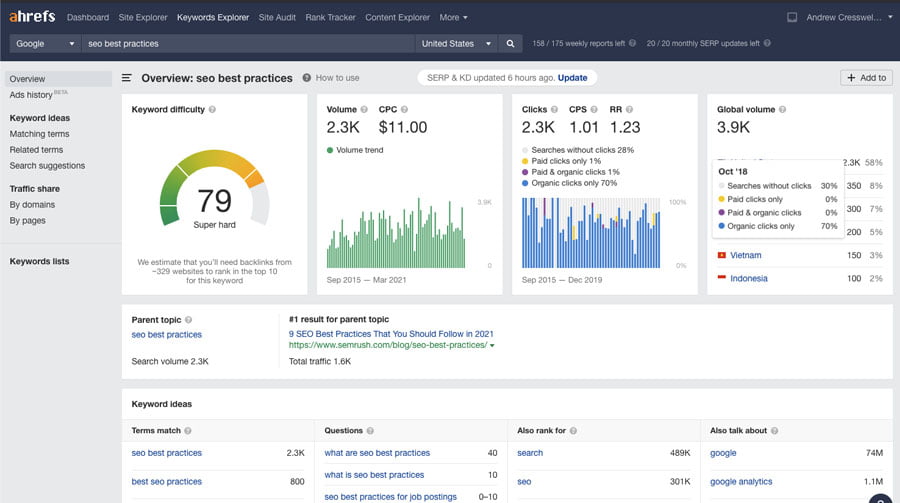
Keyword research is an essential step for any successful SEO strategy and is not an optional step that you can skip over. Keyword research will allow you to understand what people are searching for, including commonly asked questions, related search phrases and discover targetted search terms.
Keyword Research Tips
- Learn about LSI Keywords
- Try to find longtail keywords with low competition
- Search keywords in Google and look at the people also asked section to find more content ideas
- Use ahrefs content gap tool to analyse your competitors keywords
A successful SEO strategy is held up by keyword research. Without it, your strategy has no substances to build from.
2. Match the Readers Search Intent

October 21, 2019, marked the rollout of Google BERT, a new, neural network-based natural language processing algorithm. BERT is simply an algorithmic process that helps Google better understand the user intent when performing queries.
The 4 Types of Search Intent
- Informational
- Preferential/Commercial Investigation
- Transactional
- Navigational
BERT’s primary goal is to understand searchers better and deliver content that matches their query more effectively. When you combine thorough keyword research and SEO writing with user intent, you will better target readers with your content.
3. Include Keywords in the Post Title & URL
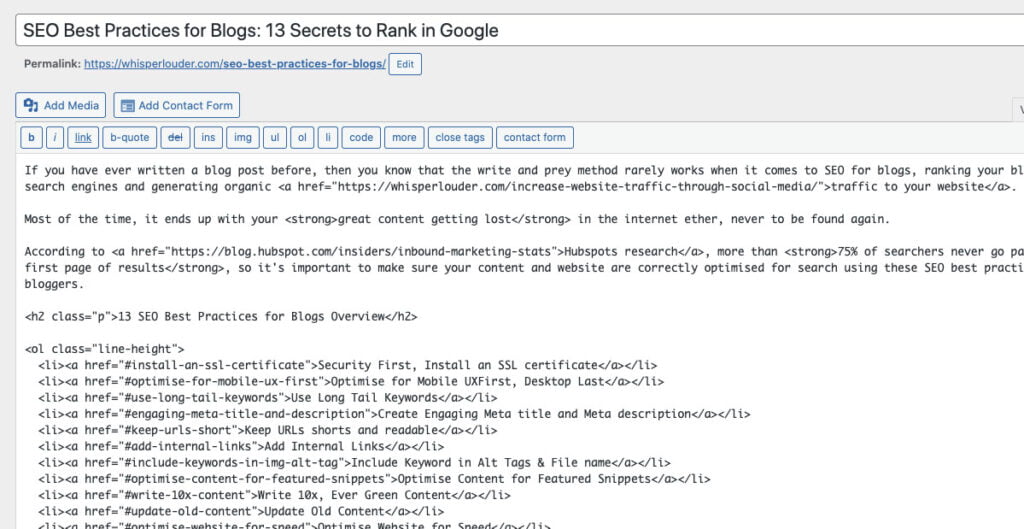
Using keywords in your blog post title and the posts URL, you will help signal to search engines what your content is about. It also helps them to rank your articles by clearly defining the topics main keywords easily.
4. Create Engaging Meta Data

We have already discussed before that Google uses keywords from your meta title to signal what your webpage is about but, your meta title and meta description are also used to highlight that information in search.
Blog Post Meta Data Tips
- Keep your meta title short at 60 characters or less
- Keep your meta description between 155 – 160 characters
- Use Power Words to Grab Attention
- Including numbers has been shown to increase CTR
- Include keywords in both the meta title and meta description
Google will bold the user’s search term in both the meta title and the meta description, helping to highlight relevant content. Once you have pushed your rankings to the top and started generating organic impressions, it is up to your metadata to entice, engage, and convert those impressions into organic clicks.
5. Focus on writing for UX, not Search Engines
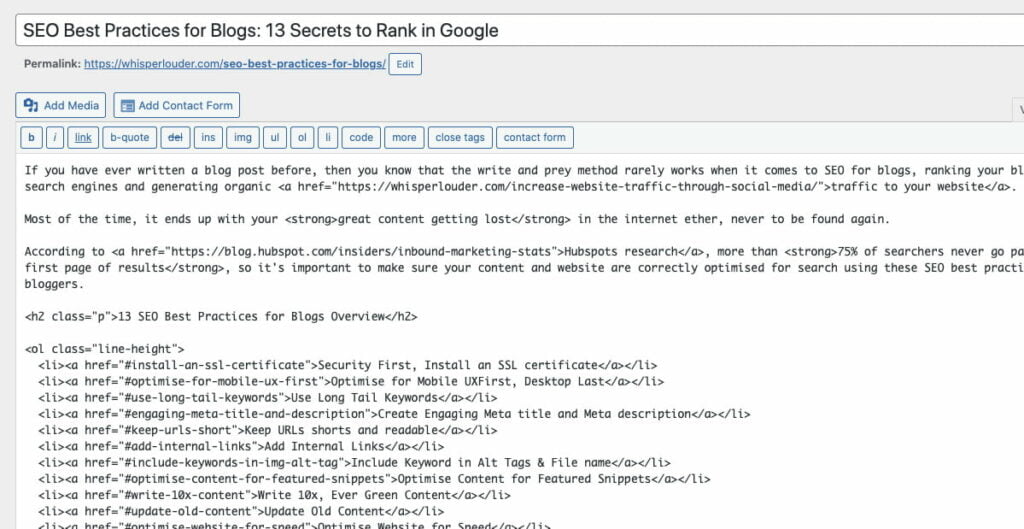
While it is true that you should optimise your content around researched keywords and include them here and there, Google values user experience far more. In fact, Google values UX that much that they have started including user experience metrics in search ranking.
UX Writing Tips
- Keep paragraphs short
- Group content topics with headings
- Summerise key information using ordered and unordered lists
- Use bold text to highlight information
- Build internal monologue
How can UX writing help my SEO? Good Question! By writing for the user, you provided a great user experience rather than one created for search robots – you were human and relatable. Readers stayed on your website longer, clicked more links, and generated positive search signals.
6. Use Alt attributes for Image SEO
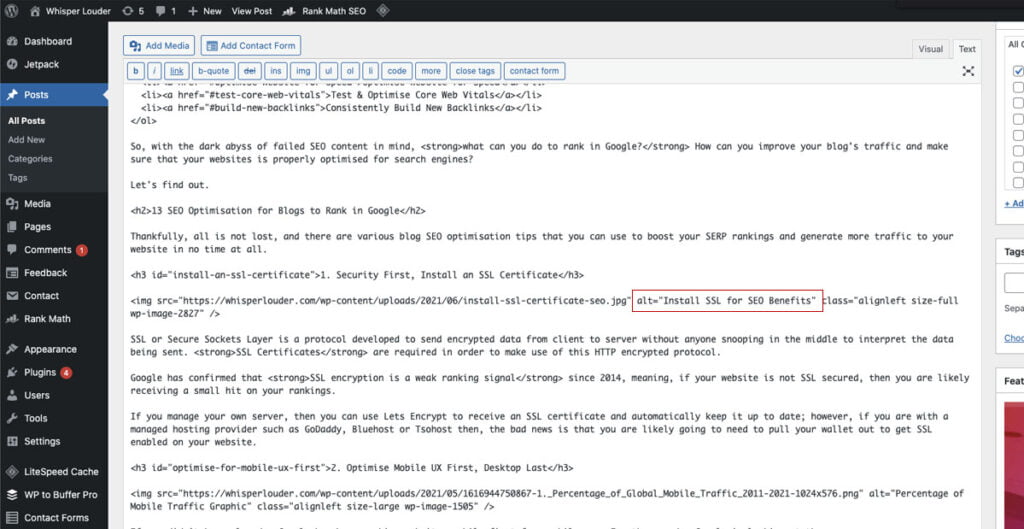
When you visit a website and see an image, you see an array of colourful pixels on the screen representing a moment in time, but that’s not how search robots see things. They need a little help now and again.
The alt attribute of an HTML IMG tag helps to describe the contents of the image and signal to crawlers what it may contain.
7. Include Outbound Links to Related Authorities
Linking out to authorities in your chosen niche is a great way to send positive search signals to Google. Outbound links expand the perspective on the original subject by including relevant information, statistics, or opinions.
By linking to authority websites, you signal that your content is trustworthy, but you also help crawlers better understand the topic of your content.
8. Answer Commonly Asked Questions
Google receives 79 billion visitors every month, out of those visitors, 8% are asking questions. Another deciding factor for this argument is voice search and how people interact with their devices.
Let’s say, for instance, you want to ask Siri or Ask Google for supermarkets near you, you may ask, “What supermarkets are located near me” – this is a great example of how voice search is impacting results and how Google decides to rank your website.
Optimise your content around answering questions and solving your reader’s problems as a primary goal. If you do this, your content will naturally pick up featured snippets and decent search rankings.
9. Optimise Content Strucutre for Featured Snippets
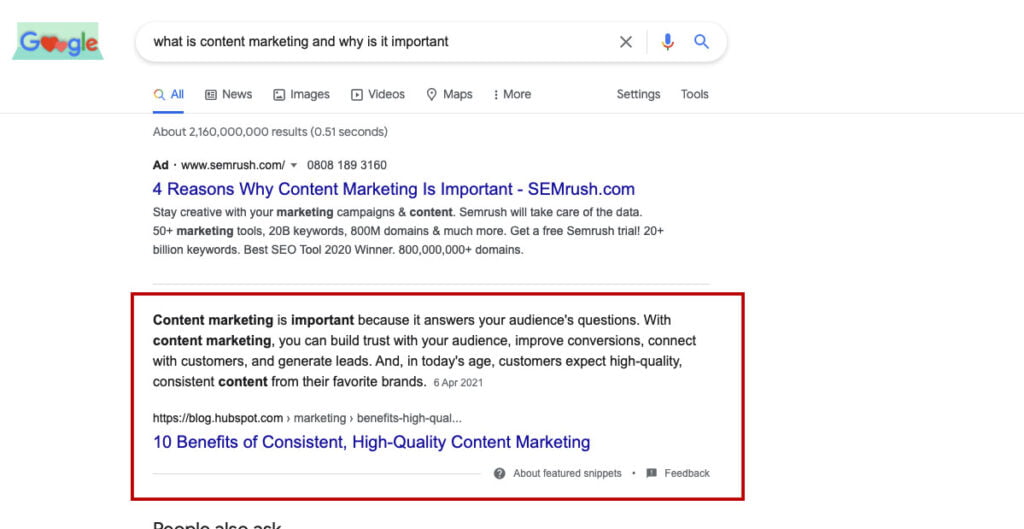
There is no magic schema markup to optimise your blog for featured snippets. Google chooses what and who to display, but you can do a few things to help make things easier for crawlers.
How can I write a featured snippet for search?
- Keep your HTML simple.
- Use a H2 tags to ‘ask the question’.
- Answer the question directly below either in a single pargraph, an unordered list (bullets), an orderedlist (numbered) or a table.
I listed four different ways to answer the question and increase your chances of grabbing featured snippets in search results. This is because there are four different types of featured snippet that can be displayed when a user queries Google.
10. Create Internal Links
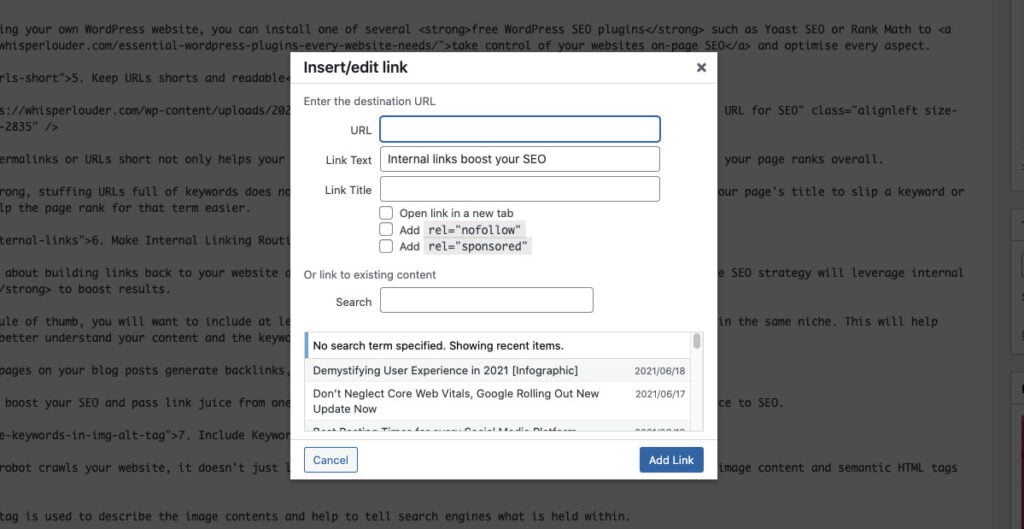
Internal links help spread page authority throughout your site and help signal to search crawlers what your content is about. Internal links are a borderline overpowered SEO strategy that can boost your search rankings.
I always aim to include a minimum of 3 topic related internal links in the content body. Rather than constantly linking text to money keywords, try a conversational tone and mix it up from time to time to increase click-through rates and engagment.
Don’t forget to set your anchor title as well. It takes zero time and provides a better user experience for your readers.
11. Maintain Acceptable Core Web Vitals
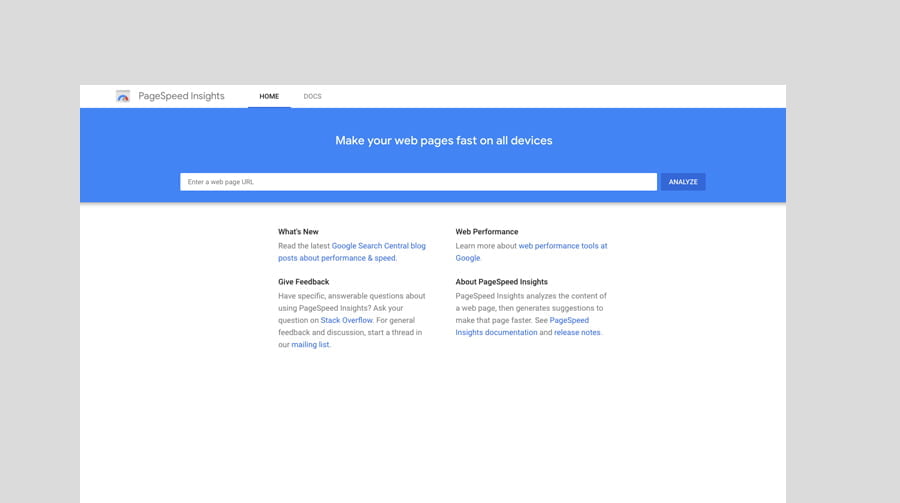
Core Web Vitals are all the rage right now and for an excellent reason too; Google has been rolling out a page experience update that integrates Core Web Vitals as key ranking signals since early June 2021.
Testing your Core Web Vitals is easy; optimising them is not always easy; however, if you fail to maintain acceptable Core Web Vitals scores, you will get penalised, and your blog rankings will suffer.
Bonus: Core Web Vitals: How to Measure, Improve & Pass
12. Build new Backlinks
Link building is considered an off-page SEO strategy and is still highly relevant in 2021 as it was in the 90s although, Google has become much smarter since the early days and can easily spot spammy backlinks a mile away.
Natural link building techniques and methods should be at the core of your website’s strategy for search optimisation and domination.
You see, ultimately – SEO is a game of trust and you need to consistently be earning more trust than those around you.
